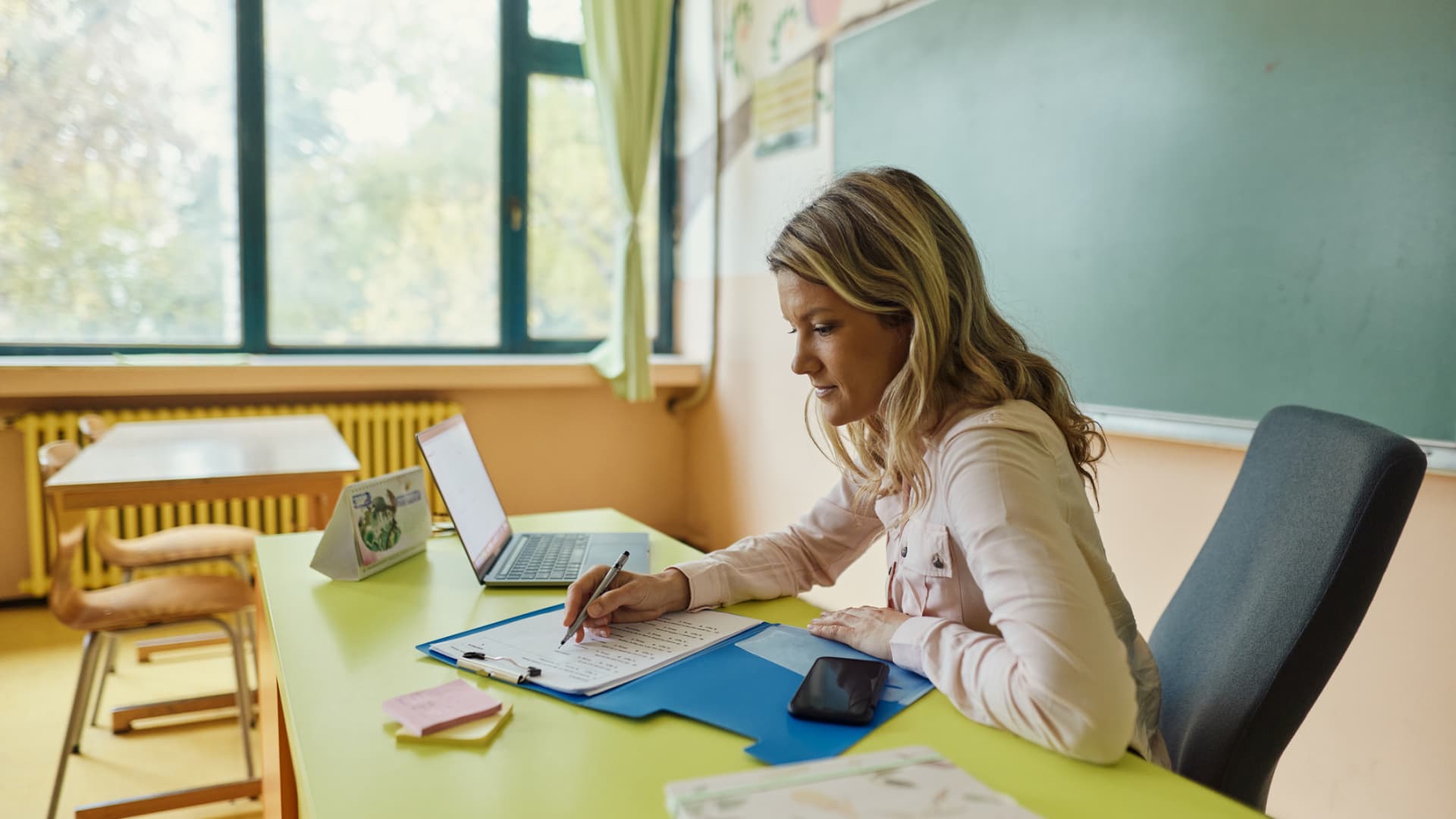The pandemic-era policy suspending federal student loan payments has been an especially big win for public servants.
Most borrowers have benefited from the payment pause, which has lasted more than three years and spanned two presidencies. But for those pursuing the popular Public Service Loan Forgiveness program, the policy has allowed them to get closer to debt cancellation while not making any payments on their debt.
“We can safely say that borrowers in PSLF have saved thousands of dollars,” said higher education expert Mark Kantrowitz.
The PSLF program was signed into law by then-President George W. Bush in 2007 and allows qualifying nonprofit and government employees to have their federal student loans canceled after 10 years, or 120 payments. The Consumer Financial Protection Bureau estimates that one-quarter of American workers could be eligible.
Here’s what the payment pause has meant for those who are pursuing the relief.
Months of the pause count toward loan forgiveness
Each month during the pause should count toward a borrowers’ timeline on PSLF, whether or not they made a payment. Because of that, experts have recommended that public servants avoid making payments on their debt during this period.
The pause on federal student loan bills has been extended eight times since it was first announced in March 2020 and has been in effect for more than 36 months now, meaning nearly a third of borrowers’ required payments to get PSLF may be covered by the relief policy.
Advocates say that public servants deserved such a benefit after the problems that have plagued the loan forgiveness program. Borrowers were often under the impression they were paying their way to loan cancellation only to discover at some point in the process that they don’t qualify, usually for confusing and technical reasons. Advocates and regulators have also blamed lenders for misleading borrowers and botching their timelines.
More from Personal Finance:
98% of workers support pay transparency
Companies are slashing parental leave benefits
Here are the ‘most employable’ college degrees
Kantrowitz said borrowers can visit StudentAid.gov to check the number of qualifying payments they’ve racked up.
The Biden administration is also working to make adjustments to people’s accounts, to make sure their payments have been counted correctly, Kantrowitz said.
Many PSLF requirements still in place
While borrowers pursuing PSLF will get credit for payments during the pause, they still need to be employed with the government or a qualifying nonprofit to be heading toward loan forgiveness, Kantrowitz said.
“The Biden administration did not waive the requirement that the borrower be employed full-time in a public service job for a paused payment to count toward PSLF,” he said.
The best way to find out if your job qualifies as public service is to fill out the employer certification form. Try to do this paperwork at least once a year, Kantrowitz said, and keep records of your confirmed qualifying payments to avoid errors or missed credit.
Borrowers should also make sure their loans are in the Direct Loan program and that they are enrolled in an income-driven repayment plan, which are other mandates of the policy. Those with other types of federal loans have until the end of 2023 to consolidate into the Direct Loan program to receive credit for qualifying payments, a spokesperson for the Education Department said.
When the payment pause on federal student loans ends, likely in September, borrowers will have to resume payments to get credit for PSLF.
Sweeping forgiveness will have less of an impact
The fate of the Biden administration’s sweeping student loan forgiveness is currently in the hands of the Supreme Court.
If the justices allow the program to proceed, the impact on borrowers pursuing PSLF may not be too significant, experts say. For some, the $10,000 or $20,000 in relief would wipe away their debt, and they would not have to make any more monthly payments.
Yet if they still have a balance remaining, their monthly bill would probably not change after the relief, since their payment is usually calculated as a share of their income rather than total debt.
